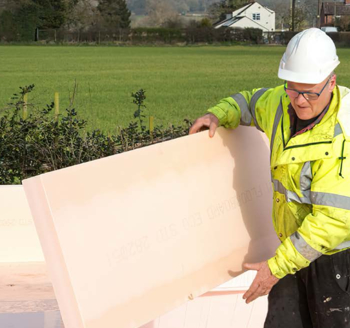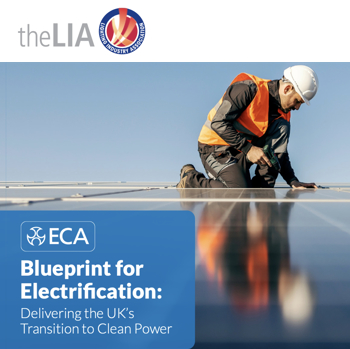Mobilisation to site: a quality perspective
Contents
|
[edit] Summary
This article documents the critical move from the design phase of a project to its construction on site. It suggests that there is a need for careful planning prior to mobilisation, together with an assurance that the design and manufactured elements of the works have been completed to an extent that the risks to starting construction have been reduced to a minimum.
The article proposes that the plan for mobilisation is prepared and composed against a series of aspects that it lists with some explanation. It also proposes that there is a robust review, possibly in the form of a gating process, that is conducted by a suitably senior member of the management team who is prepared to release the project into the construction phase and thereby permit mobilisation to take place.
[edit] Planning for mobilisation
Planning for mobilisation is at least as important as the move itself. It is vital to be certain about the needs of the client, who knows the site better than anyone, the facilities available and the access and egress arrangements.
[edit] Client Meeting
The client probably knows more about the site than anyone else. The client also has a vested interest in making sure that the requirements for the works are met in the most appropriate manner. There are also conditions under the various regulations that make the client responsible for certain actions. It is essential, therefore, to meet with the client, on or off site, to be certain exactly what can and cannot take place. The client also is likely to have local knowledge of such matters as who the statutory undertakers are, who are the most suitable local suppliers and what the local traffic conditions are.
It is also important to confirm with the client that the works will meet the contracted requirements and that the layout and conduct of the proposed works will be accepted.
[edit] Site visit
It is not possible to prepare a sensible plan without visiting the site. The visit can be made with or without the client. Typically, the following should be examined:
- General site conditions, such as surfaces, soil conditions, access and egress, local roads and existing facilities, such as accommodation and parking
- Potential site layouts, including lay-down areas and siting of stores and accommodation
- Any other projects in the area, especially those that may impact on local availability of staff, materials or equipment
Consider also the facilities discussed below and remember that photographs can be very useful, particularly as the memory fades as you walk out of the site!
The site visit should be formally documented in a report that is readily available to those setting up and running the site. The report should form the basis for the plan to mobilise.
[edit] Facilities
[edit] Utilities
The site visit should provide information of the availability of water, electricity, gas, telephone (line and GSM) and broadband/internet access. The names of suitable statutory undertakers will be needed, so that they may be contacted for connection and, of course, pricing.
[edit] Accommodation
Includes offices for staff working on the site, as well as sleeping accommodation where this is to be provided. Consideration should be given to where staff may park their caravans, as many construction craft will use these on a long project.
[edit] Health and welfare
Information should be gathered concerning the local hospitals and other medical facilities, together with the routes from the sites to these facilities.
The need for the correct numbers of first aiders and the offices for on-site medical facilities should also be determined.
[edit] Waste management
Begins on site with separation of waste into the appropriate types. The site plan should indicate where the containers are to be located and provide the initial requirements for the waste management plan.
Arrangements should be investigated at this stage into where the local waste management sites are and who might be a suitable waste carrier. The arrangements should cover the processes of disposal of waste from the site and its conduct to the local recycling plant.
[edit] Local suppliers
There are great advantages in using local suppliers, not only for materials and staffing, but also for welfare facilities, such as the canteen. Examples have been found of local farms forming a consortium to manage canteens as a small but effective business.
Use of local suppliers for materials makes them accessible and reduces the carbon footprint of the project and is highly recommended, once the relevant quality checks have confirmed their suitability.
[edit] Local authorities
Local authorities should be contacted to determine any restrictions, local laws and/or other aspects that may impact on the works. It will also speed things up if a good relationship is established with the people who will be dealing with the F10, consents and other approvals.
[edit] Documentation
The relevant documentation for the site should be taken to the site visit for reference. This should include the relevant parts of the contract, quality and project management plans, any site layout drawings and knowledge of utilities, roads and so forth. It is useful also to prepare a full set of documentation that will be used to record the results of the works, such as inspection and test plans and quality check sheets.
[edit] Lessons learned from previous mobilisations
It is important to learn from the mistakes made in previous mobilisations, as well as to build on the successes that have been recorded. This relies on a robust lessons learned programme that people actually use!
[edit] Documented plan for mobilisation
A formal plan for mobilising to site should be documented to cover all the points above, together with the schedules and any other relevant matters that staff mobilising will need to know. The plan should be written in a way that the knowledge is available to all, i.e., in simple language and with a straightforward structure.
[edit] Site setup
[edit] Site security
Under the various regulations that control sites, there is a need to make certain that access to the site is restricted only to those with a legitimate reason to be there. This will include staff working on site and legitimate visitors. This means that the site must be properly protected with barriers that will prevent unauthorized access and a suitable entry and exit point with controls.
During the site visit, it is important to recognize any potential security risks, including known areas of criminality that are local to the site.
[edit] Site filing system
The site filing system is required to accept records that are to be retained, either for presentation to the Client as evidence of successful completion or to be retained by the constructor. It is advantageous to prepare copies of the inspection and test plans and blank check sheets and other record forms and host them in files on site at the start of the works. This will permit those creating the records to extract the blank forms, complete them on site and return them to their proper places in the site filing system. This will avoid the bow wave of work at the end of the project when everybody is hunting around for the evidence that was lost somewhere down the line – or was left in someone’s van or tablet computer!
This is also an opportunity to set in place a rigorous document control system, so that all persons working on or off site are fully aware of the process that must be followed. All attempts to bypass the document control system should be robustly rejected.
[edit] Site health, safety and welfare
It is not in the remit of this article to discuss site safety. Suffice it to say that safety of all on site is paramount and must be managed properly to reduce risk to the lowest possible. However, any planning must include knowledge of the nearest accident and emergency hospital facilities and planning for first aid and welfare facilities on site to meet the relevant regulations as a minimum.
[edit] Site environmental management
It is not in the remit of this article to discuss environmental management. However, it is very important to reduce all forms of environmental impact to the lowest possible and to reduce risk of fugitive discharge to an acceptable level.
[edit] Finance, accounting and scheduling
Suitable project controls functions should be set in place at the earliest opportunity to control cost and maintain schedule. This should include:
- Progress against plans
- Cost reporting
[edit] Human resources
In times of financial constraint, it is common to reduce the numbers of persons on site to a minimum. At times, less experienced staff are employed to reduce cost. It is vital to the success of the project to make certain that there is an adequate number of suitably experienced staff to assure the success of the project.
Where unionised staff are employed, it is important to form a good relationship with union representatives, both on site and at the senior level, at an early stage.
[edit] Field reporting
Staff working on site should be encouraged to report on progress and completion of works progressively with the works. This means completing inspection and test pans and Quality check sheets as the works are completed and then filing them immediately. Any reporting of progress should also be provided to the project controls function.
[edit] Contract administration
[edit] Collaborative working
The project should give full attention to the possibility of setting in place formal collaborative relationships under ISO 44001 across the entire supply chain. This will assist in reduction in cost and time, especially where there is trust between the various players that allows for acceptance of work without repeated checking up and down the chain. It would be inappropriate for an engineer with no detailed experience of tunnelling to check and approve a design for a tunnel prepared by a firm that specialises in tunnelling.
[edit] Relationships with the client
Contract administrators must make themselves thoroughly familiar with all clauses of the contract, especially those that are ‘hidden’ in appendices. Frequently, the quality requirements are in such an appendix and place strong controls over the conduct of the works.
[edit] Relationships with sub-contractors
In many cases, there is a requirement in the contract with the Client to pass down certain requirements throughout the supply chain. This is particularly true of the quality requirements. Even if there is no such requirement, it may be important to pass some or all the requirements down to provide assurance that the client’s contract requirements will be met.
It is also important to make sure that there are good relationships and good communication paths. Contractor Quality Forums are good ways to promote both. Regular Quality meetings with individual Contractors can provide assurance of satisfactory progress.
[edit] Quality Control
Quality control on site will provide an assurance that the contractual requirements have been met. Processes should be set in place to assess conformance of materials and completed work on a regular basis. The following is a list of some of the checks that should be undertaken.
- Completion of inspection and test plans progressively with the work. Confirmation that each step has been completed and that they accurately reflect the status of the work
- Completion of the quality check sheets progressively with the work. Confirmation that the results are within the permitted parameters and that the work correctly reflects the stated results.
- Confirmation that the material certification indicates that the material meets the contractual requirements and that they have not been falsified.
- Confirmation that concrete cube crush results meet the specified requirements.
- Audits of the management of the works at all levels
- Surveillance visits to confirm that the works are being undertaken correctly on site and that the results meet the contracted requirements
Original article written by Keith Hamlyn on behalf of the Chartered Quality Institute, Construction Special Interest Group, and accepted for publication by the Competency Working Group.
--ConSIG CWG 13:29, 05 Jan 2019 (BST)
[edit] Related articles on Designing Buildings Wiki
Featured articles and news
Building Safety Regulator reforms
New roles, new staff and a new fast track service pave the way for a single construction regulator.
Cooling centres and cool spaces
Managing extreme heat in cities by directing the public to places for heat stress relief and water sources.
Winter gardens: A brief history and warm variations
Extending the season with glass in different forms and terms.
Restoring Great Yarmouth's Winter Gardens
Transforming one of the least sustainable constructions imaginable.
Construction Skills Mission Board launch sector drive
Newly formed government and industry collaboration set strategy for recruiting an additional 100,000 construction workers a year.
New Architects Code comes into effect in September 2025
ARB Architects Code of Conduct and Practice available with ongoing consultation regarding guidance.
Welsh Skills Body (Medr) launches ambitious plan
The new skills body brings together funding and regulation of tertiary education and research for the devolved nation.
Paul Gandy FCIOB announced as next CIOB President
Former Tilbury Douglas CEO takes helm.
UK Infrastructure: A 10 Year Strategy. In brief with reactions
With the National Infrastructure and Service Transformation Authority (NISTA).
Ebenezer Howard: inventor of the garden city. Book review.
The Grenfell Tower fire, eight years on
A time to pause and reflect as Dubai tower block fire reported just before anniversary.
Airtightness Topic Guide BSRIA TG 27/2025
Explaining the basics of airtightness, what it is, why it's important, when it's required and how it's carried out.
Construction contract awards hit lowest point of 2025
Plummeting for second consecutive month, intensifying concerns for housing and infrastructure goals.
Understanding Mental Health in the Built Environment 2025
Examining the state of mental health in construction, shedding light on levels of stress, anxiety and depression.
The benefits of engaging with insulation manufacturers
When considering ground floor constructions.
Lighting Industry endorses Blueprint for Electrification
The Lighting Industry Association fully supports the ECA Blueprint as a timely, urgent call to action.






















